
You probably have known someone at some point who drank a lot of red wine, and when you asked them why, they replied, "Because it is good for my heart."
While they may or may not have been entirely honest about their motives, red wine is a heart-healthy beverage - and one reason why is that it is rich in nutrients called "polyphenols."
In fact, polyphenols are found in quite a few fruits, nuts, spices, and vegetables.
Many of these foods are low in carbohydrates, and thus can fit well into a ketogenic diet.
In this article, I will share 40 foods with you that are high in polyphenols.
But first, let's talk more about what polyphenols are and what they can do for your health.
That way you will understand the advantages of adding more of these foods to your diet!
Quick Navigation Low Carb High Polyphenol InfographicWhat is a Polyphenol?What Are the Health Benefits of Polyphenols?40 Foods High in PolyphenolsHerbs and Spices High in Polyphenols1. Cloves (15,188 mg per 100 g)2. Peppermint, Dried (11,960 mg per 100 g)3. Star anise (5,460 mg per 100 g)4. Cocoa Powder (3,448 mg per 100 g)5. Mexican Oregano, Dried (2,319 mg per 100 g)6. Celery Seed (2,094 mg per 100 g)7. Dried Sage (1,207 mg per 100 g)8. Dried Rosemary (1,018 mg per 100 g)9. Dried Spearmint (956 mg per 100 g)10. Dried Thyme (878 mg per 100 g)11. Capers (654 mg per 100 g)Other Herbs and Spices High in PolyphenolsFruits High in Polyphenols12. Black Chokeberry (1,756 mg per 100 g)13. Black Elderberry (1,359 mg per 100 g)14. Lowbush Blueberry (836 mg per 100 g)15. Blackcurrant (758 mg per 100 g)16. Highbush Blueberry (560 mg per 100 g)17. Plum (377 mg per 100 g)Other Fruits High in PolyphenolsVegetables High in Polyphenols18. Black Olive (569 mg per 100 g)19. Green Olive (346 mg per 100 g)20. Globe Artichoke Heads (260 mg per 100 g)21. Red Chicory (235 mg per 100 g)22. Red Onion (168 mg per 100 g)23. Green Chicory (166 mg per 100 g)24. Spinach (119 mg per 100 g)Other Vegetables High in Polyphenols (per 100 g)Nuts and Seeds High in Polyphenols25. Flaxseed Meal (1,528 mg per 100 g)26. Chestnut (1,215 mg per 100 g)27. Hazelnut (495 mg per 100 g)28. Pecan Nut (493 mg per 100 g)29. Soy Flour (466 mg per 100 g)30. Roasted Soybean (246 mg per 100 g)31. Almond (187 mg per 100 g)32. Soy, Tempeh (148 mg per 100 g)Beverages High in Polyphenols33. Coffee (214 mg per 100 ml)34. Black Tea (102 mg per 100 ml)35. Red Wine (101 mg per 100 ml)36. Green Tea (89 mg per 100 ml)37. Apple Juice (68 mg per 100 ml)38. Pomegranate Juice (66 mg per 100 ml)Other Beverages High in PolyphenolsOther 39. Extra-Virgin Olive Oil (62 mg per 100 ml)40. Vinegar (13 mg per 100 ml)ConclusionLow Carb High Polyphenol Infographic

Want to use this infographic on your blog? Just copy and paste the code below!
<p><a href='https://www.authoritydiet.com/foods-high-polyphenols-antioxidants-net-carbs/'><img src='https://www.authoritydiet.com/images/i/low-carb-polyphenol-foods-infographic-hd.jpg' border='0' /></a><br /><strong>Please include attribution to AuthorityDiet.com with this graphic.</strong></p>
What is a Polyphenol?
A polyphenol is an important type of antioxidant, and are common in plants.
Antioxidants are substances which can counter oxidation occurring in other molecules.
Oxidation is a harmful process which can occur in our cells. The chemical reaction of oxidation leads to the production of what are known as "free radicals."
Free radicals can damage cells and DNA (1).
Sometimes this process of damage is referred to as "oxidative stress."
Researchers now believe that oxidative stress is responsible for the development of many age-related conditions including cardiovascular diseases, cancer, and neurodegenerative diseases (2, 3, 4, 5, 6, 7, 8).
Now, getting back specifically to polyphenols, this actually refers to an entire class of antioxidant compounds common in plants.
What makes a compound a polyphenol?
On a chemical level, they have more than one “phenol unit” for every molecule. A phenol unit is a six-membered aromatic hydrocarbon ring. This ring is bonded to a hydroxyl group.
One great example of a polyphenol is resveratrol. This compound is found in a number of plants, but the best-known source is the skin of red grapes - which are used in wine.
And that wraps around to the introduction to this article and why red wine is good for you (in moderation, of course).
On that note, you already know that wine has a certain bitter, astringent bite to it. That is a result of its high polyphenol content.
If you think about other foods which are high in polyphenols (see the forthcoming list), you may notice this same bitter taste in them as well.
Strongly brewed tea tastes bitter. Extra virgin olive oil has a certain bitterness. Dark chocolate is bitter. Vinegar is bitter. The list goes on.
Some foods which are high in polyphenols are less bitter because they contain other compounds which balance out their flavors.
Strawberries are a good example. But even though we typically think of strawberries as sweet, many of them do undeniably have a bitter edge in the backdrop.
Now, before I move on, I want to mention one more word that it is useful to be familiar with when you are learning about polyphenols, and that is "flavonoids."
Sometimes people use the words "polyphenols" and "flavonoids" interchangeably.
They are not identical however; polyphenol is a broader category.
Flavonoids actually are classified as the largest family of polyphenols.
So flavonoids is always a kind of polyphenol, but a polyphenol is not always a kind of flavonoid.
While reading about antioxidants in healthy foods, you sometimes will also encounter subclasses of polyphenols:
- Anthocyanins
- Flavanols
- Flavanones
- Flavonols
- Flavones
- Isoflavones
So whenever you encounter any of those words, you are looking at a polyphenolic compound.
KEY POINT: Polyphenols are antioxidants, which are compounds that can fight the harmful effects of free radicals. Free radicals cause cell and DNA damage, so eating foods which are rich in them can help prevent that damage. Polyphenols tend to lend a bitter flavor to foods.
What Are the Health Benefits of Polyphenols?

So now that you know what polyphenols are, let’s talk more about their specific benefits. Why should you eat the foods in this list?
- Fight human immunodeficiency virus (HIV) (10).
- Protect your cardiovascular health (11).
- Protect yourself from various forms of cancer (12).
- Potentially help to protect against neurodegenerative diseases like Alzheimer’s or Parkinson’s (13, 14, 15).
- Fight the effects of aging (16), potentially leading to greater longevity as well as higher overall quality of life.
KEY POINT: As antioxidants, polyphenols have numerous health benefits, protecting your body now and over the long run as a regular part of your diet.
40 Foods High in Polyphenols
Now that you know why polyphenols are so important, you can understand the importance of making sure that your diet includes a rich abundance of them.
If you eat plenty of polyphenols regularly, you will be feeding your body what it needs to fight oxidative stress.
This in turn will reduce damage to your cells and DNA, making it less likely that you will go on to develop age-related diseases.
So which foods are highest in polyphenols? Here is a list to help you get started.
I have decided to sort this list into categories to make it easier to search. Within each category, foods are listed with the highest concentration to the lowest concentration.
All polyphenol content numbers are taken from this source. For those who are carb conscious (e.g. low-carb dieters), the net carbs are included.
Here are the 40 foods high in polyphenols:
Herbs and Spices High in Polyphenols
Many of the foods which are highest in polyphenol content are herbs and spices -which is great news for you.
Why? Once you stock up on these herbs and spices, you can use them to flavor a wide variety of dishes.
That means that you can increase your polyphenol intake without radically altering your diet.
1. Cloves (15,188 mg per 100 g)
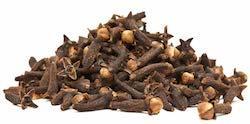
Contents (58):
- Polyphenol: 15,188 mg per 100 g
- Net carbs: 27 g per 100 g
This delicious spice is immediately recognizable from its distinctive pleasant aroma.
It can be used to flavor a wide variety of dishes and works well as an accompaniment to allspice, basil, vanilla, red wine, onion, anise, citrus or peppercorns.
2. Peppermint, Dried (11,960 mg per 100 g)
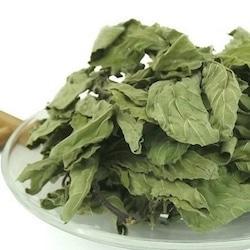
Contents (59):
- Polyphenol: 11,960 mg per 100 g
- Net carbs: 22 g per 100 g
This mint is a hybrid between spearmint and watermint.
It is one of the most popular flavorings in food and beverages, used in chocolates and other sweets, chewing gum, ice cream, teas and even toothpaste.
It also is commonly included in hygiene products like soaps and shampoos.
The effects of peppermint have been studied extensively, with results indicating that this herb has a wide range of health benefits (17), including:
- Fighting oxidation in the body
- Combating microbes and viruses
- Counteracting tumors
- Relaxing gastrointestinal tissue
In short, adding peppermint to your diet will provide you with the antioxidant advantage of a higher polyphenol content, but will also help to soothe your GI tract and provide you with other benefits as well.
3. Star anise (5,460 mg per 100 g)
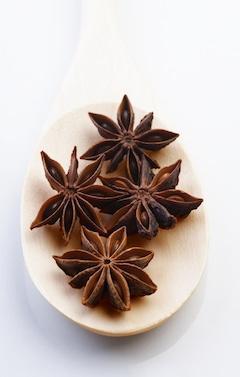
Contents (60):
- Polyphenol: 5,460 mg per 100 g
- Net carbs: 35 g per 100g
This herb is derived from an evergreen tree which is found in southwest China and northeast Vietnam.
Anise has a flavor which is very similar to that of licorice.
Licorice has garnered a somewhat dubious reputation in some countries (like the US) because it contains a compound called glycyrrhizin which can cause a lethal reaction if you eat very large amounts of it (as in several 2-ounce bags every day for 14 days or more).
For this reason, many products which are marketed as "licorice" or "licorice-flavored" in the USA are flavored with fennel or anise.
I am not telling you this to urge you away from licorice products - on the contrary, in moderate amounts, they are safe for most people, and may even have some benefits.
But it is helpful to know what to look for in the grocery mart if you want to add more polyphenols to your diet through star anise.
Along with the spice itself, you can also purchase products labeled "licorice" that are anise-flavored, and you will be able to enjoy the same antioxidant benefits.
Check the ingredients lists on the backs of products to see whether they are flavored with anise, licorice, or fennel.
4. Cocoa Powder (3,448 mg per 100 g)
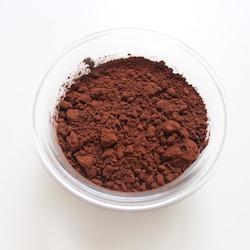
Contents (61):
- Polyphenol: 5,460 mg per 100 g
- Net carbs: 18 g per 100 g
Cocoa powder is what you get when you grind up cocoa beans and extract the cocoa butter.
The product is also referred to as "cocoa solids," but when you find it for sale, “cocoa powder” is a more common name.
As an ingredient, cocoa powder (or "cacao powder") is used to flavor many chocolate products.
These include chocolate syrup, hot chocolate, and a variety of chocolate confections. Up to 10% of the weight of cocoa powder may be comprised entirely of flavonoids.
Cocoa also contains a number of other beneficial nutrients: magnesium, calcium, copper, potassium, phosphorus, sodium and zinc. Additionally, cocoa is a natural source of caffeine.
The health effects of cocoa have been studied (18). Researchers have discovered that cocoa can:
- Improve insulin resistance
- Reduce diastolic blood pressure and mean arterial pressure
- Fight oxidative stress throughout the body
It is worth noting that cocoa has a higher antioxidant capacity than red wine or teas (19).
Just make sure that you are selecting healthy cocoa-containing products.
One excellent example is dark chocolate, which has a polyphenol content of 1,664 mg per 100 g.
While you are shopping, check the cocoa content of the dark chocolate products you are thinking about buying.
At the very least, you should be eating chocolate bars which consist of at least 70% cocoa. A better ratio would be 85% and above (the higher the better).
90% cocoa dark chocolate net carbs can be as low as 14 g per 100 g (139).
Check the sugars as well. The less sugar is in your dark chocolate, the better.
Not only does dark chocolate augment your health with the antioxidant powders of polyphenols, but it turns out it has another cool benefit too.
Dark chocolate can improve satiety (20), and it does so at a higher level than milk chocolate.
This means that dark chocolate may reduce your urge to overeat.
Ultimately, that could mean that consumed in small amounts, it may help you to moderate the rest of your food intake.
This in turn could assist you with maintaining weight or losing weight.
5. Mexican Oregano, Dried (2,319 mg per 100 g)
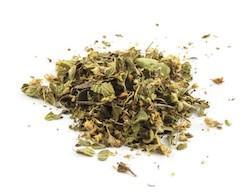
Contents (95):
- Polyphenol: 2319 mg per 100 g
- Net carbs: 21 g per 100 g
When you think about oregano, you probably think about Mediterranean cuisine, right?
Actually, there are two different kinds of oregano: Mediterranean and Mexican. The form which is very high in polyphenols is the Mexican variety.
What is the difference between the two? They are actually different plant species entirely.
Mediterranean oregano is a type of mint and grows throughout that part of the world, where it is also referred to as "wild marjoram."
Mexican oregano on the other hand is related to lemon verbena.
The flavor of Mexican oregano can best be described as "citrusy," though some people also think it tastes a bit like licorice.
That citrusy flavor means that it works quite well in the same sorts of Mexican dishes which traditionally call for lime or lemon.
It is sometimes used to make certain types of chili powders, and frequently shows up in spicy cuisine.
So if you have never tried Mexican oregano, give it a go and see if you like it.
It tastes great with a wide variety of foods and recipes, and accompanies other spices such as cumin, garlic and pepper nicely.
6. Celery Seed (2,094 mg per 100 g)
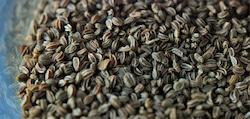
Contents (96):
- Polyphenol: 2094 mg per 100 g
- Net carbs: 29 g per 100 g
Celery seed is another spice which is particularly high in polyphenols, and which also happens to have a long history of use in the world of traditional Ayurvedic medicine.
In ancient India, celery seed was taken to treat everything from indigestion to liver disease. It also was used to treat infections, water retention and arthritis.
Its main medicinal use in today’s world is as a diuretic. But some people still take it for arthritis, muscle spasms, inflammation, blood pressure and soothing the nerves.
These uses are anecdotal, but that does not change the fact that celery seed is very nutritious.
In fact, along with polyphenols, celery seed contains protein, vitamin A, vitamin C, vitamin B6, dietary fiber, calcium, magnesium, phosphorus, potassium, sodium, iron, and even omega-3 fatty acids (96).
What does it taste like?
If you’ve never tried it, celery seed tastes more or less like celery itself. Used in cooking, it confers a flavor which is just slightly bitter and grassy.
It tastes great with both vegetable and meat based dishes, and makes an awesome complement to a wide variety of flavors and aromas.
You will quickly discover it is one of the most versatile spices in your kitchen cabinet.
7. Dried Sage (1,207 mg per 100 g)
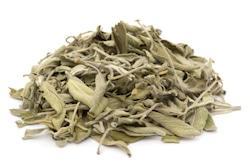
Contents (62):
- Polyphenol: 1,207 mg per 100 g
- Net carbs: 21 g per 100 g
The type of sage which you use in your kitchen is known as "common sage," “culinary sage," or "garden sage."
It has of course been made famous through the song Scarborough Fair, which lists it along with parsley, rosemary and thyme.
The savory flavor of sage is a complement to many regional cuisines, including Italian, Middle Eastern and Balkan dishes. It is used in British and American cooking as well.
Sage’s health effects appear to be promising based on research trials, especially for neurodegenerative diseases.
One study (21) concluded favorably on "the efficacy of the S. officinalis extract in the management of mild to moderate Alzheimer's disease. Moreover, S. officinalis may well reduce agitation of patients but this needs to be confirmed."
8. Dried Rosemary (1,018 mg per 100 g)
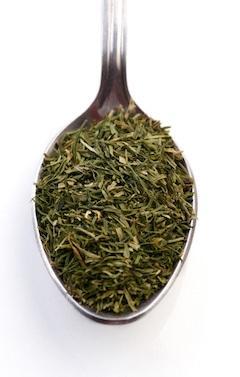
Contents (63):
- Polyphenol: 1,018 mg per 100 g
- Net carbs: 21 g per 100 g
Now onto the next herb in Scarborough Fair, rosemary. Rosemary is a perennial herb which is common throughout the Mediterranean, and as a result is used in many dishes from that region.
It can hold up well even under drought conditions, and thus is one of the easier herbs to grow in your own garden.
Rosemary’s flavor is distinctly astringent and bitter, the result of its high polyphenol content.
The flavor it imparts is considered to pair up particularly well with chicken, lamb or pork.
The aroma of rosemary is considered to be quite pleasing by many people as well. As a result, it is commonly included in bath products as well as perfume oils and room fragrances.
9. Dried Spearmint (956 mg per 100 g)
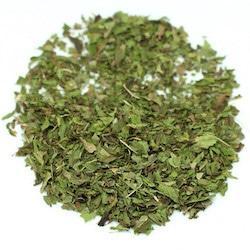
Contents (64):
- Polyphenol: 956 mg per 100 g
- Net carbs: 22 g per 100 g
Previously, I talked about peppermint. Another type of mint which contains a high concentration of polyphenols (though not remotely as high as peppermint) is dried spearmint.
Spearmint is most commonly used to flavor mixed beverages, a couple of prime examples being mint julep and mojito.
In the southern states of the US, spearmint is often added to sweet iced tea as well.
10. Dried Thyme (878 mg per 100 g)
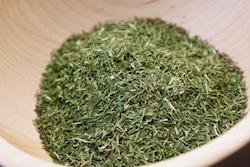
Contents (65):
- Polyphenol: 878 mg per 100 g
- Net carbs: 27 g per 100 g
Finally, thyme is another of the spices mentioned in the Scarborough Fair song, and also one which is high in polyphenols.
Its pleasing aroma has made it popular in incense throughout the ages, and it is also used in many different types of cuisine.
It is also sometimes an ingredient in teas and tisanes.
11. Capers (654 mg per 100 g)
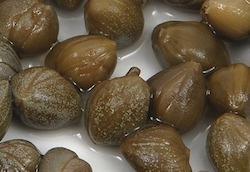
Contents (66):
- Polyphenol: 654 mg per 100 g
- Net carbs: 2 g per 100 g
Caper buds come from a plant called a "caper bush." Salted and pickled, the buds are used to season Mediterranean dishes.
They are particularly popular in Sicilian and Aeolian Italian foods, and often are found in pasta sauces.
They are also one of the key ingredients used to make tartar sauce.
Other Herbs and Spices High in Polyphenols
The above list should get you started with some nutritious recipe ideas!
Here are some other herbs and spices which also have significant polyphenol content which you can add to your diet (per 100 g):
- Sweet dried basil (97): 322 mg polyphenol, 21 g net carbs
- Curry powder (98): 285 mg polyphenol, 2.8 g net carbs
- Dried ginger (99): 202 mg polyphenol, 36 g net carbs
- Fresh thyme (100): 163 mg polyphenol, 14.5 g net carbs
- Lemon verbena dried (101): 106 mg polyphenol, 0 g net carbs
- Cumin (102): 55 mg polyphenol, 33 g net carbs
- Chinese cinnamon (103): 48 mg polyphenol, 28 g net carbs
- Caraway (104): 33 mg polyphenol, 12 g net carbs
- Ceylon cinnamon (105): 27 mg polyphenol, 27.5g net carbs
- Dried parsley (106): 25 mg polyphenol, 24 g net carbs
- Dried marjoram (107): 23 mg polyphenol, 20.3 g net carbs
KEY POINT: All of these herbs will add some zest to your cooking while helping you stay healthy!
Fruits High in Polyphenols
12. Black Chokeberry (1,756 mg per 100 g)
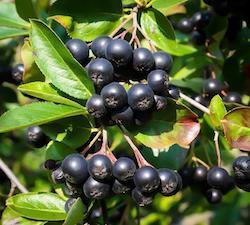
Contents (67):
- Polyphenol: 1,756 mg per 100 g
- Net carbs: 55 g per 100 g
Odds are you have never seen a black chokeberry or a product containing it anywhere in your grocery store.
In fact, you probably have not even heard of chokeberry before.
There seems to be some confusion over whether black chokeberry (Aronia melanocarpa) is safe to eat.
Researchers report (22) that "there is no data in the literature about any unwanted or toxic effects of Aronia melanocarpa berries, juice or extracts."
So why is a fruit which is so high in polyphenols something you have never heard of before?
The reason probably boils down to the flavor of the fruit.
Because it is so rich in these powerful antioxidants, it has quite an astringent, bitter taste. Eating it raw is not for everyone.
If it is mixed in with a sweetener of some kind however, it can become more palatable.
This is why it is sometimes used to make jams and jellies, and may also be an ingredient used in juice, tea or wine.
So check the jam section of your grocery store to see if you can find black chokeberry. It is one of the most antioxidant-rich fruits around.
13. Black Elderberry (1,359 mg per 100 g)
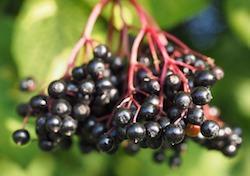
Contents (68):
- Polyphenol: 1,359 mg per 100 g
- Net carbs: 11 g per 100 g
Elderberry is another type of berry you may never have tried, but you are more likely to have heard of it than you are to have heard of black chokeberry.
This berry has been popular as a home remedy for centuries to treat infectious illnesses and wounds.
Note that you should never eat an elderberry raw.
The raw berries contain a chemical compound which is close to cyanide and are thus quite dangerous. Once they are cooked, they are safe to consume.
They have a tart flavor, and may be very bitter. As a result, they are generally considered more enjoyable when they are used to make jams or juices.
The flavonoids in elderberry are so potent that they were found to prevent swine flu in research studies (23)!
14. Lowbush Blueberry (836 mg per 100 g)
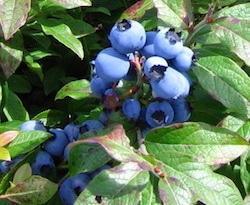
Contents (69):
- Polyphenol: 836 mg per 100 g
- Net carbs: 12 g per 100 g
In recent years, blueberries have gained something of a reputation as being a superfood. One of the reasons for that is their incredibly high antioxidant content (24).
Lowbush Blueberry (Vaccinium angustifolium) grows in Canada and the northeastern US.
Not only do they contain abundant polyphenols, but they also are an excellent source of dietary fiber and vitamin C.
They are also significantly sweeter than many other fruits on this list, so they are enjoyable to eat on their own.
Of course, they also go well in juices, jams and other products, and are a popular addition to breakfast cereals and morning porridge.
15. Blackcurrant (758 mg per 100 g)
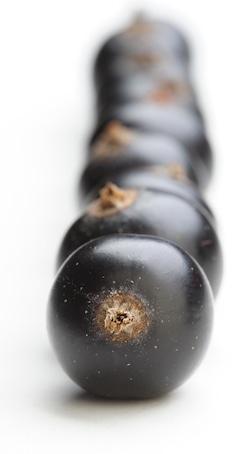
Contents (70):
- Polyphenol: 758 mg per 100 g
- Net carbs: 15 g per 100 g
Blackcurrants have a distinctive scent and flavor which is extremely recognizable. It is also characteristically bitter, as you might expect from a berry which is high in polyphenols.
Researchers have looked into the health benefits of blackcurrant supplements and have discovered that these bitter fruits can improve vascular health while decreasing markers which are associated with oxidative stress (26).
Additionally, blackcurrants have impressive amounts of vitamin C. One cup would provide you with 300% of the RDA.
Also adding to their benefits, blackcurrants are low in carbs, and therefore an ideal choice if you are on a ketogenic diet.
Because blackcurrant berries are so tart, they are usually made into jellies, jams, juices or teas - though they can be eaten raw.
Interestingly enough, they also are used in a number of savory dishes, including barbecue, mincemeat, and seafood.
If you happen to live in the US, you may have noticed that blackcurrants and blackcurrant products are hard to come by.
Blackcurrants once were as popular in the US as they are overseas, but during the early 20th century, blackcurrant farming in America was banned.
This had to do with the logging industry, which was threatened by white pine blister rust, of which blackcurrants were a vector.
Currently, blackcurrant farming is still banned in some states, though the ban has been lifted in others. But blackcurrants never resumed their old levels of popularity.
Still, blackcurrant products are finally starting to show up on grocery store shelves in the United States again, so be on the lookout for them.
They are a wonderful way to add more nutrition to your diet.
16. Highbush Blueberry (560 mg per 100 g)
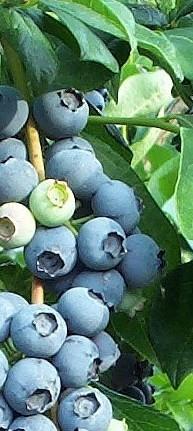
Contents (71):
- Polyphenol: 560 mg per 100 g
- Net carbs: 12 g per 100 g
This is another blueberry species with the scientific name Vaccinium corymbosum.
Native to North America in Canada and the United States, it has also been cultivated overseas in Japan and Europe as well as New Zealand.
Like Lowbush Blueberry, it is a popular form of blueberry which is widely eaten.
Even though its polyphenol content is not as high as that of Lowbush Blueberry, it is still among the best choices to enhance that aspect of your diet through fruit.
The health benefits of blueberries have been well-demonstrated through scientific research:
- They can fight the effects of metabolic syndrome (27).
- They can protect the brain against cognitive impairment related to aging (28).
- They may reduce the risk of heart attack (29).
- They might be able to boost memory among the elderly (30).
Blueberries are tasty by themselves. They work well in salads and desserts as well!
17. Plum (377 mg per 100 g)
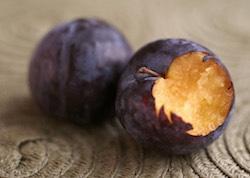
Contents (72):
- Polyphenol: 377 mg per 100 g
- Net carbs: 10 g per 100 g
Finally, one more delicious, refreshing fruit to add to your menu each day for an extra dose of polyphenols is plum.
Plums consist largely of water and carbohydrates, but they are also a good source of vitamin C and antioxidants.
Other Fruits High in Polyphenols
Here are a few other fruits with relatively high polyphenol concentrations (per 100 g):
- Sweet cherry (108): 274 mg polyphenol, 14 g net carb
- Blackberry (109): 260 mg polyphenol, 5 g net carbs
- Strawberry (110): 235 mg polyphenol, 6 g net carbs
- Red raspberry (111): 215 mg polyphenol, 5 g net carbs
- Prune (112): 194 mg polyphenol, 57 g net carbs
- Black grape (113): 169 mg polyphenol, 17.5 g net carbs
- Apple (114): 136 mg polyphenol, 11.6 g net carbs
- Peach (116): 59 mg polyphenol, 8.5 g net carbs
- Redcurrant (117): 43 mg polyphenol, 9.7 g net carbs
- Apricot (118): 34 mg polyphenol, 9 g net carbs
- Nectarine (119): 25 mg polyphenol, 9 g net carbs
- Quince (120): 19 mg polyphenol, 13.1 g net carbs
- Pear (121): 17 mg polyphenol, 11.9 g net carbs
- Green grape (122): 15 mg polyphenol, 17 g net carbs
KEY POINT: Most of the fruits which are highest in polyphenols are bitter berries like blackcurrants. Even though these berries may be a bit too piquant to eat on their own, they taste wonderful in jams and desserts.
Vegetables High in Polyphenols
Now that you know which fruits are highest in polyphenols by concentration, let's take a look at some vegetables you can also try to boost your antioxidant intake.
18. Black Olive (569 mg per 100 g)
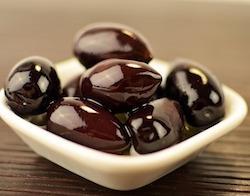
Contents (73):
- Polyphenol: 569 mg per 100 g
- Net carbs: 7 g per 100 g
Enjoy olives on your pizza or in your salads?
Then you are also enjoying the antioxidant power of polyphenols. There is no other vegetable source with a higher concentration.
Many people wonder what the difference is between black olives and green olives (aside from the color, of course).
These are the same species of olive; the black ones are picked while they are ripe, whereas the green ones are picked beforehand.
For the most part, their nutritional profiles are about the same, but you will get a higher dose of polyphenols with black olives then you will with green olives.
19. Green Olive (346 mg per 100 g)
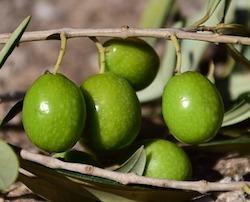
Contents (74):
- Polyphenol: 346 mg per 100 g
- Net carbs: 6 g per 100 g
I have of course just discussed black and green olives and the difference between them.
You can see however that green olives are still very high in polyphenols, even though it is a lower concentration than you will find black olives.
What other nutritional properties to black and green olives possess? Olives contain a fair amount of vitamin E, along with iron, copper and monounsaturated fat.
20. Globe Artichoke Heads (260 mg per 100 g)
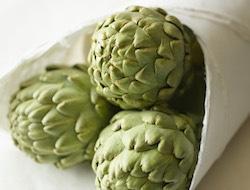
Contents (75):
- Polyphenol: 260 mg per 100 g
- Net carbs: 6 g per 100 g
Another vegetable with a high polyphenol concentration is the globe artichoke. The heads of globe artichokes in particular contain ample antioxidants.
Artichokes have a mild flavor and can work well in a very wide variety of dishes. They are also good for cleansing the palate.
21. Red Chicory (235 mg per 100 g)
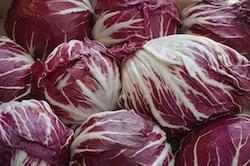
Contents (76):
- Polyphenol: 235 mg per 100 g
- Net carbs: 2 g per 100 g
Next time you make a salad, consider looking at the grocery store for some red chicory (Cichorium intybus).
This plant is native to Europe and is now cultivated throughout North America, Australia and China.
Sometimes, in the United States, the word "chicory" is used to refer improperly to the curly endive. These are however two different vegetables.
Chicory has a distinctly bitter taste, as is common with foods which are high in polyphenols.
Used in moderation however, the bitterness can be balanced out and can add delightful flavor and nutrition to your next salad.
22. Red Onion (168 mg per 100 g)
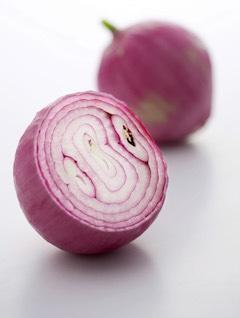
Contents (77):
- Polyphenol: 168 mg per 100 g
- Net carbs: 9 g per 100 g
These onion cultivars are instantly recognizable in the produce section of the grocery store from their purplish-reddish skins.
Their flavor is generally considered to be mild, and may even be sweet.
Before they are cooked however, they can have quite a bite. Their flavor is a great accompaniment to a wide variety of foods.
Not only are red onions high in polyphenols, but their health benefits are widely recognized.
Onion compounds have demonstrated antibiotic and anti-carcinogenic properties (25).
23. Green Chicory (166 mg per 100 g)

Contents (78):
- Polyphenol: 166 mg per 100 g
- Net carbs: 1 g per 100 g
This is another form of chicory which has green leaves instead of red leaves. Like its cousin red chicory, it imparts a bitter flavor to the dishes that it is used in.
24. Spinach (119 mg per 100 g)
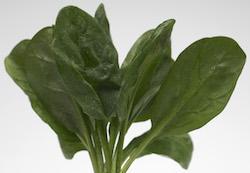
Contents (79):
- Polyphenol: 119mg per 100 g
- Net carbs: 2 g per 100 g
Finally, one more vegetable which contains high amounts of polyphenols is spinach.
Spinach also contains significant amounts of vitamin C, vitamin E, vitamin A, vitamin K, folic acid, iron, vitamin B2, magnesium and manganese.
Spinach can be eaten raw or cooked, and can be purchased fresh or frozen. It tastes delicious on its own, but it also goes well in many different types of cuisine.
Other Vegetables High in Polyphenols (per 100 g)
- Shallot (123): 113 mg polyphenol, 13.8 g net carbs
- Yellow onion (124): 74 mg polyphenol, 7.3 g net carbs
- Broccoli (125): 45 mg polyphenol, 4.4 g net carbs
- Asparagus (126): 29 mg polyphenol, 1.8 g net carbs
- Potato (127): 28 mg polyphenol, 14.8 g net carbs
- Curly endive (128): 24 mg polyphenol, 0.2 g net carbs
- Red lettuce (129): 23 mg polyphenol, 1.4 g net carbs
- Endive (130): 18 mg polyphenol, 0.3 g net carbs
- Carrot (131): 14 mg polyphenol, 7.2 g net carbs
KEY POINT: Now you know how to make the perfect salad that is high in polyphenols, which can nourish your body with the antioxidants it needs.
Nuts and Seeds High in Polyphenols
Now let's move onto the next category, nuts and seeds.
25. Flaxseed Meal (1,528 mg per 100 g)
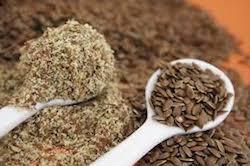
Contents (80):
- Polyphenol: 1,528 mg per 100 g
- Net carbs: 0 g per 100 g
At the top of the list for nuts and seeds which are high in polyphenols is flaxseed meal.
Flaxseed meal simply refers to flaxseed which has been ground up. It may be sold as "flaxseed meal" or as "ground flaxseed." Both are the same.
Flaxseed serves up a huge dose of polyphenols, but it is a popular dietary supplement for other reasons as well.
For one thing, it is a rich source of omega-3 fatty acids, which have powerful anti-inflammatory properties (31).
For vegans in particular, this is important, since the other main source of omega-3 fatty acids is fish. Flaxseed offers a vegan-friendly alternative.
Additionally, omega-3 fatty acids are associated with an improvement in cardiovascular markers (32), which may mean a lower risk of heart disease.
Why eat ground flaxseed instead of whole flaxseed? Flaxseed is difficult for your body to digest in the whole form.
When it is ground up, your body can process it more efficiently. Less of it will pass through undigested, and you will be able to absorb more of the nutritional benefits.
26. Chestnut (1,215 mg per 100 g)
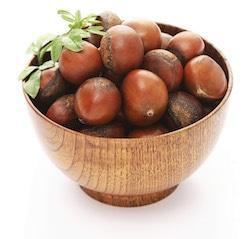
Contents (81):
- Polyphenol: 1,215 mg per 100 g
- Net carbs: 44 g per 100 g
Chestnuts are not the most popular nuts in the United States, but they are enjoyed in cuisines around the world.
Sadly they are high in carbohydrates, so they are something you will probably want to consume only in moderation, especially if you are adhering to a low-carb diet.
Despite that drawback, they are amazingly rich in polyphenols.
They also contain a great deal of vitamin C, around 40 mg per 100 g when they are raw. That amount drops by 40% or so when the nuts are cooked.
You can eat raw chestnuts, but they have an astringent flavor (which is not surprising, given all those polyphenols).
They are more commonly enjoyed roasted. They do not have to be peeled if they are roasted, but they do if you eat them raw.
Chestnuts are also sometimes candied, or integrated into desserts like pies or cakes. They may also be used in pastas, soups, sauces, stews and other savory recipes.
27. Hazelnut (495 mg per 100 g)
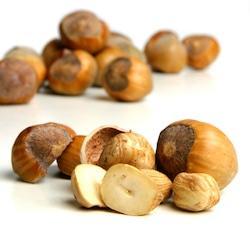
Contents (82):
- Polyphenol: 495 mg per 100 g
- Net carbs: 7 g per 100g
Hazelnuts come from hazel trees. They can be eaten either raw or roasted, and contain a pretty significant amount of polyphenols, making them quite good for you.
They also are rich in other important nutrients such as vitamin E, protein, manganese and monounsaturated fat.
Other essential nutrients found in hazelnuts include vitamin A, thiamine, riboflavin, niacin, pantothenic acid, vitamin B, folate, calcium, iron, magnesium, potassium, zinc, sodium, phosphorus, vitamin C and vitamin K.
These wonderfully nutritious nuts are commonly used in dessert recipes. Along with pecans, they may be the basis for pralines.
When the oil is pressed out of them, it can be used for cooking, or it can be integrated into coffee creamers and similar products for flavoring.
28. Pecan Nut (493 mg per 100 g)
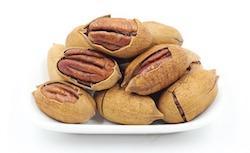
Contents (83):
- Polyphenol: 493 mg per 100 g
- Net carbs: 4 g per 100 g
Pecans are another popular nut which serve as an excellent source of polyphenols. They are native to the southeast US as well as Mexico.
Pecans are low in carbohydrates but offer an abundance of nutrition in the form of zinc, manganese, copper and magnesium.
There has been research (33, 34) specifically on pecans and their health effects.
These studies have discovered that the polyphenols contained in pecans can boost the antioxidant capacity of blood.
This prevents LDL-oxidation. These nutrients also improve lipid profiles.
29. Soy Flour (466 mg per 100 g)
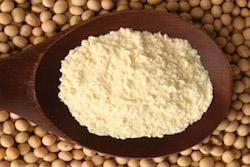
Contents (84):
- Polyphenol: 466 mg per 100 g
- Net carbs: 25 g per 100 g
Next up are several forms of soy, starting with soy flour, which contains high amounts of polyphenols.
Soy flour is made by grinding up soybeans. It can be used to fortify baked goods with protein while also increasing their moisture.
It is also used to create soymilks as well as textured vegetable protein.
Sometimes it is added to processed foods as well in order to improve their overall texture and flavor.
Along with all the polyphenols that soy flour contains, it also is a fantastic source of protein and dietary fiber. Additionally, it contains B vitamins, potassium and iron.
Soy is an important component in any vegetarian or vegan diet, since it can help to make up for protein lost through other sources.
30. Roasted Soybean (246 mg per 100 g)
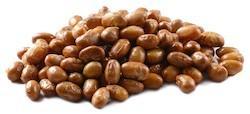
Contents (85):
- Polyphenol: 246 mg per 100 g
- Net carbs: 28 g per 100 g
While soy flour is a versatile ingredient, it is hardly the only way to enjoy the deliciousness and nutrition of soy.
One alternative is to eat roasted soybeans.
These make for a tasty snack, and they still contain a high amount of polyphenols, though not as much as you get from just eating soy flour.
31. Almond (187 mg per 100 g)
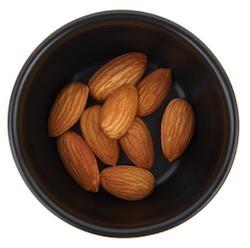
Contents (139):
- Polyphenol: 246 mg per 100 g
- Net carbs: 10 g per 100 g
One nut with high polyphenol content is almond. Almonds are very popular, and if you enjoy nuts, there is a good chance that you already have some in your kitchen cabinet right now.
Interestingly enough, an almond is not technically a nut. It is actually a “drupe,” which means that it is a hard fruit with a fleshy outer part around a central shell containing a seed. Almonds need to be shelled to be eaten.
Almonds are native to the Mediterranean, which is why they frequently are used in cuisine from that part of the world.
Almonds may be eaten raw, or they may be toasted.
They are often salted or covered in sugar and enjoyed as snacks, or integrated into salads, savory dishes or desserts. They are processed to make almond milk as well.
Along with their polyphenols, almonds provide plenty of other nutrition. A handful of almonds is a great source of vitamin B, vitamin E, calcium, magnesium, iron, phosphorus, manganese, and zinc.
Almonds also provide us with choline, potassium, dietary fiber, and healthy fats (139).
Since almonds are so versatile, they are easy to add to your diet, and can give you a great nutritional boost!
32. Soy, Tempeh (148 mg per 100 g)

Contents (86):
- Polyphenol: 148 mg per 100 g
- Net carbs: 9 g per 100 g
Another form of soy which is abounding with polyphenols is tempeh.
This form of soy comes from Indonesia and is made through a carefully controlled process of culturing and fermentation. The resulting product has a cake-like consistency.
Soy tempeh not only contains polyphenols, but also contains other important nutrients such as B vitamins and calcium.
The phytoestrogens contained in soy may also contribute significant benefits to human health (35).
KEY POINT: There are many nuts and seeds which are high in polyphenols. Soy products in particular are an excellent option since soy comes in many forms and is a versatile food.
Beverages High in Polyphenols
Now that you know what foods you can eat to increase your polyphenol intake, what beverages can you drink to do the same?
33. Coffee (214 mg per 100 ml)

Contents (87):
- Polyphenol: 214 mg per 100 g
- Net carbs: 0 g per 100 ml
Growing up, you probably heard contradicting advice on whether or not to drink coffee.
Coffee seems to go through phases when it comes to reputation.
There have been years where coffee was slotted (improperly) as an unhealthy beverage, and other years where coffee has been upheld as a health-conscious choice.
Part of the reason coffee had a bad rap for so long was that the World Health Organization (WHO) had it listed as a possible carcinogen.
Coffee is no longer on that list however; it was removed as of 2016.
Another concern with coffee involved cardiovascular health.
Coffee contains caffeine, and caffeine has the potential to raise blood pressure.
Studies (37) however have shown that drinking coffee has no effect on the vascular function or lipid profile of healthy adults.
As to benefits, coffee contains quite a few antioxidants in the form of polyphenols.
In fact, the beverage is so popular in the USA that it appears to be the number one source of antioxidants in the American diet (36).
This review (38) took a look at the benefits and risks of consuming coffee. The review concluded, "Overall, results of this comprehensive review show that the health benefits (or null effects) clearly outweigh the risks of moderate coffee consumption in adult consumers."
So drinking coffee is an excellent way to increase your antioxidant uptake, so long as you continue to do so in moderation.
34. Black Tea (102 mg per 100 ml)
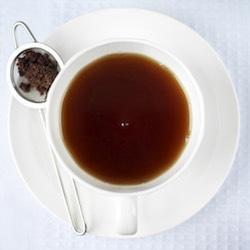
Contents (88):
- Polyphenol: 102 mg per 100 ml
- Net carbs: 0.3 g per 100 ml
Black tea is made from the same plant as green tea, but the leaves are allowed to ferment in the sun before they are dried.
This additional step in processing black tea has some impact on its nutritional profile.
There are higher levels of theaflavins and lower levels of catechins (39).
As both these polyphenols are important, it is smart to drink both black tea and green tea so you can enjoy high doses of each.
Black tea has been shown to possess other health benefits as well.
Drunk daily, it can reduce your risk of cardiovascular disease (40), and may help to prevent cancer as well (41).
35. Red Wine (101 mg per 100 ml)

Contents (89):
- Polyphenol: 101 mg per 100ml
- Net carbs: 2.7 g per 100ml
Red wine is probably the most famous beverage for its polyphenols, but as you can see, at 101 mg per 100 g, it does not contain the highest concentration.
Both black tea and coffee contain more, as do quite a few foods.
Still, red wine’s polyphenol concentration is quite high, and the antioxidants you consume with the beverage can help to prevent a wide range of disease (42, 43, 44).
Surprisingly, the alcohol content of red wine is not necessarily a problem either so long as you are only drinking in moderation.
Studies indicate that moderate (but not high) alcohol consumption is associated with lower triglycerides and higher HDL cholesterol (45, 46).
So red wine is a great addition to your diet, just so long as you do not go overboard with it.
36. Green Tea (89 mg per 100 ml)
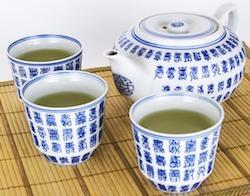
Contents (90):
- Polyphenol: 89 mg per 100 ml
- Net carbs: 0 g per 100 ml
I already talked about black tea; now I want to touch upon green tea.
As mentioned before, green tea and black tea are made from leaves from the same plant. Green tea however is dried without fermentation in the sun.
Green tea’s main health benefit is its polyphenol content. There really is not much else going on with it nutritionally (47).
Nonetheless, those polyphenols are quite potent, and their health benefits are measurable.
Green tea can reduce the risk of mortality from cardiovascular disease (48).
Green tea can also protect your brain from the effects of age (49).
While black tea contains higher levels of polyphenols referred to as theaflavins, green tea has higher levels of polyphenols called catechins.
So both green tea and black tea have a role to play in a healthy diet.
37. Apple Juice (68 mg per 100 ml)
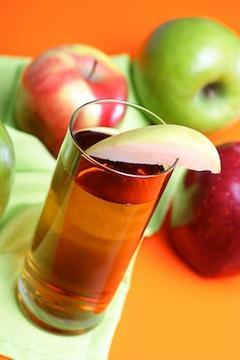
Contents (91):
- Polyphenol: 68 mg per 100 ml
- Net carbs: 12.1 g per 100 ml
Another beverage which is reasonably high in polyphenols is apple juice.
Apple juice is rich in polyphenols and also contains boron, which can improve bone health, as well as vitamin C.
The nutrition from apples can reduce the risk of cancer, cardiovascular disease and asthma (50).
So while apple juice may not get a lot of attention among health food aficionados, perhaps it should.
The old bromide "an apple a day keeps the doctor away" may sound dated - but there is a strong element of truth to it.
38. Pomegranate Juice (66 mg per 100 ml)

Contents (92):
- Polyphenol: 68 mg per 100 ml
- Net carbs: 14.4 g per 100 ml
If references to the nutritional value of apples sound oddly (and inappropriately) dated, it is perhaps because some other very healthy fruits have stolen the limelight in recent years.
One super fruit which has become very popular over the past decade is pomegranate.
Pomegranates and pomegranate juice are high in polyphenol content. A number of studies have been conducted on the rich antioxidants in pomegranates (51, 52).
Pomegranate appears to possess anti-inflammatory and even anticancer properties (53).
There was a time when pomegranates were hard to come by in the supermarket, and pomegranate juice was nigh unheard of, but both are now common even in small stores.
Other Beverages High in Polyphenols (per 100 ml)
- Orange juice (132): 56 mg polyphenol, 9.8 g net carbs
- Grapefruit juice (133): 53 mg polyphenol, 9.2 g net carbs
- Lemon juice (134): 42 mg polyphenol, 3.1 g net carbs
- Chocolate beverage with milk (135): 21 mg polyphenol, 10.7 g net carbs
- Pummelo juice (136): 18 mg polyphenol, 10 g net carbs
- White wine (137): 10 mg polyphenol, 10 g net carbs
- Rosé wine (138): 10 mg polyphenol, 4.1 g net carbs
KEY POINT: While red wine is the most famous polyphenol-rich beverage, there are many other great options as well, including coffee, black and green tea, and fruit juice.
Other
Finally, here are two other fantastic sources of polyphenols which you can use in your cooking.
39. Extra-Virgin Olive Oil (62 mg per 100 ml)
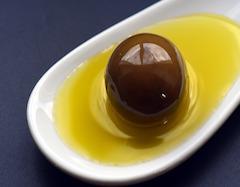
Contents (93):
- Polyphenol: 68 mg per 100 ml
- Net carbs: 0 g per 100 ml
The health benefits of extra-virgin olive oil are widely documented.
One of the reasons that olive oil has so many advantages for health is the fact that it is high in polyphenol content.
Thanks to these antioxidants, it is a powerful anti-inflammatory, and may reduce your risk for heart disease (54).
It also may have a pain-relieving effect, not unlike that of NSAIDs like Ibuprofen (55).
Olive oil can be used for cooking, and is a healthy alternative to less wholesome oils like canola oil.
To learn more about healthy and unhealthy oils, check out our article on the 6 Healthiest Oils to Cook With.
40. Vinegar (13 mg per 100 ml)
Contents (94):
- Polyphenol: 13 mg per 100 ml
- Net carbs: 0 g per 100 ml
Vinegar is another great source of polyphenols. There are a number of different types of vinegar you can buy, and all have nutritional benefits.
For example, balsamic vinegar can improve cardiovascular health (56), as can apple cider vinegar (57).
You can cook many dishes using vinegar, and you can also use it on cold foods such as salads to enhance both flavor and nutrition.
KEY POINT: Cooking with olive oil or vinegar is yet another great way to up your antioxidant intake.
There Are Dozens Of Foods and Beverages Which Can Enhance Your Diet With the Power of Polyphenols
Many people think that if they want to consume more polyphenols to partake of their health benefits, they need to drink more red wine.
Red wine is certainly a wonderful source of these potent antioxidants, but it is hardly the only one.
Many other foods and drinks have a high concentration of polyphenols and are brimming with other nutrients as well.
Now you know 40 different foods and beverages which can boost your polyphenol intake, fighting inflammation and the effects of oxidation while protecting you from age-related diseases now and in the future!

